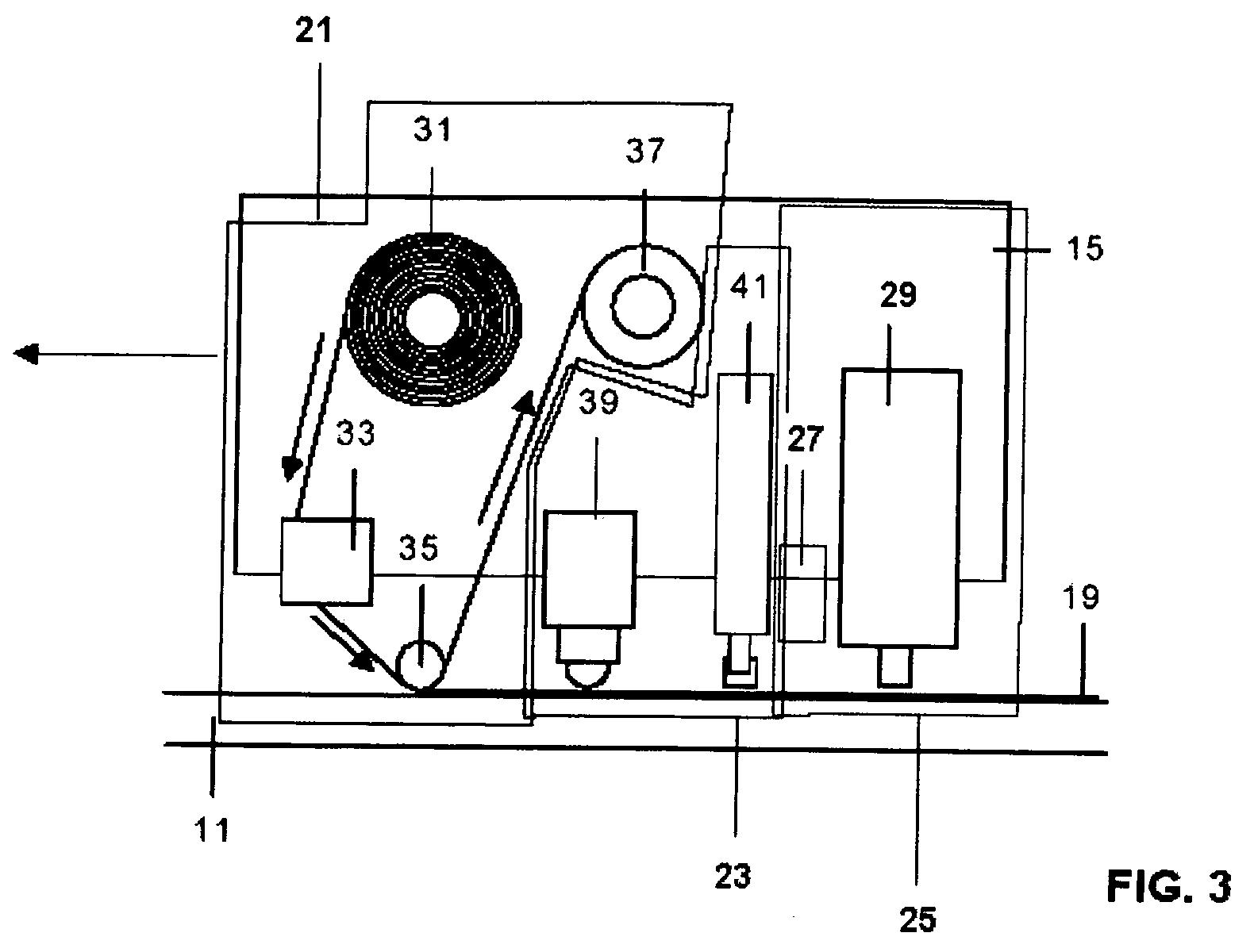Jig and out-of-autoclave process for manufacturing composite material structures
- Summary
- Abstract
- Description
- Claims
- Application Information
AI Technical Summary
Benefits of technology
Problems solved by technology
Method used
Image
Examples
first embodiment
[0062]In a first embodiment, the process object of the present invention is carried out as follows.
[0063]The manufacture of the structure starts with the placement of the first layer of material. In this operation, using the previously described jig 9 for example, the prepreg located on the reel 31 passes through a blade system 33 towards the compacting roller 35 positioning it on the surface of the stacking jig 13. The separating paper accompanying the prepreg is rolled up on the reel 37. The compacting roller 39 and the ultrasound unit 41 then carry out compacting operations on the prepreg tape 19 placed on the stacking jig 13. The compacted material is then preheated under the infrared emitter 27 and is cured to a certain degree using the electron bema emitter 29. This operation is carried out with the relative shift of the stacking table 13 and the head 15, until all the material corresponding to a layer of the structure is placed, compacted and partially cured.
[0064]This layer ...
second embodiment
[0067]In the process object of the present invention, the different layers would be cured once the stacking has ended.
[0068]Thus, if the jig 9 was used, the different layers which will form the structure are stacked in the same manner described above and they are compacted one by one with the compacting roller 39 and the ultrasound compacting unit 41.
[0069]Once all the layers of composite material with the suitable size and orientation have been stacked, they are cured using the infrared emitter 27 and the electron beam emitter 29, carrying out the necessary runs with the head 15 until achieving the desired polymerization of the polymer chains.
[0070]The modifications comprised within the scope of the following claims can be introduced in the embodiments which have just been described.
PUM
| Property | Measurement | Unit |
|---|---|---|
| Temperature | aaaaa | aaaaa |
| Temperature | aaaaa | aaaaa |
| Power | aaaaa | aaaaa |
Abstract
Description
Claims
Application Information
 Login to View More
Login to View More - R&D
- Intellectual Property
- Life Sciences
- Materials
- Tech Scout
- Unparalleled Data Quality
- Higher Quality Content
- 60% Fewer Hallucinations
Browse by: Latest US Patents, China's latest patents, Technical Efficacy Thesaurus, Application Domain, Technology Topic, Popular Technical Reports.
© 2025 PatSnap. All rights reserved.Legal|Privacy policy|Modern Slavery Act Transparency Statement|Sitemap|About US| Contact US: help@patsnap.com



